The prestigious Hermès brand is by far one of the most acclaimed fashion houses in the world. With 186 years of history, this atelier has left a mark in the world of luxury and trends, always innovating with every creation, and being part of pop culture worldwide.
The Hermès’ success has been led by the incredible value of its craftsmanship, opting for traditional techniques from the early days that still remain intact. The quality of its materials and the timelessness of its design have certainly created an aura of rich luxury that will always accompany Hermès accessories.
Without a doubt, the luxury world wouldn’t be complete without Hermès, and here we want to show you how this brand has come so far to become an icon in history, and how its products continue to be desirable objects that will never be out of style.
- Hermès History: The origins of Luxury
- How many Hermès stores are there?
- How are Hermès products crafted?
- Which Hermès bag is the most popular?
- Why are Hermès bags so expensive?
- Why invest in Hermès bags?
- Why can’t I buy a Hermès bag?
- How to know if a Hermès bag is authentic?
- How to take care of a Hermès bag?
Hermès History: The origins of Luxury
The beginnings of Hermès date back to the 19th century, with a rich history rooted in tradition and hand-crafted items. Over time, Hermès became a sturdy brand that has conquered every obstacle and become an innovative wonder in the luxury world. However, to understand how Hermès started and how it has obtained the success that it boasts today, we need to look back at its inception.
The original workshop
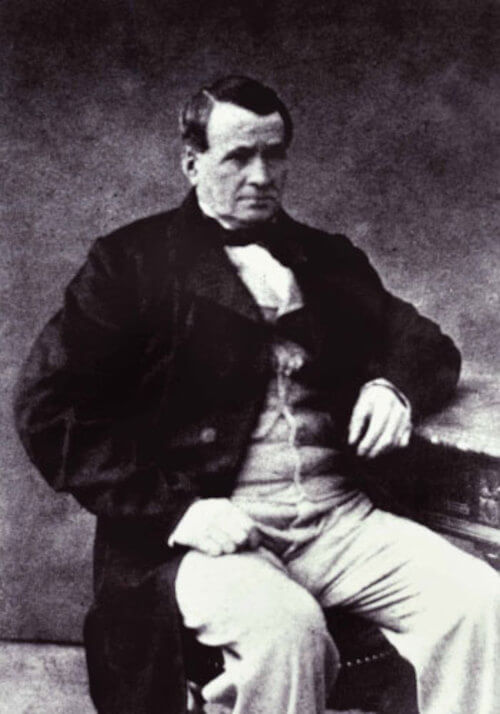 Thierry Hermès, founder of the brand
Thierry Hermès, founder of the brand
In the 19th century, Thierry Hermès embarked on a journey that would ultimately shape the legacy of the iconic brand that bears his name. Beginning as a humble harness workshop on rue Basse-du-Rempart in Paris, his unwavering commitment to craftsmanship and pioneering leather techniques laid the cornerstone for Hermès’s remarkable ascent.
The brand quickly gained renown for its exceptional quality, earning accolades such as the prestigious first prize at the 1855 and 1867 Expositions Universelles in Paris. Under the stewardship of Thierry’s son, Charles-Émile Hermès, the business flourished, relocating to the esteemed address of 24 rue du Faubourg Saint-Honoré in Paris. As its influence spread across the globe, Hermès introduced timeless treasures like the iconic Haut à Courroies bag, solidifying its status as a paragon of elegance and luxury.
Thierry Hermès’s vision, born in a modest harness workshop, has become an enduring legend in the world of luxury. His pioneering leather craftsmanship and dedication to quality became the bedrock of Hermès, an illustrious brand that has graced the international stage since the 19th century.
The new administration
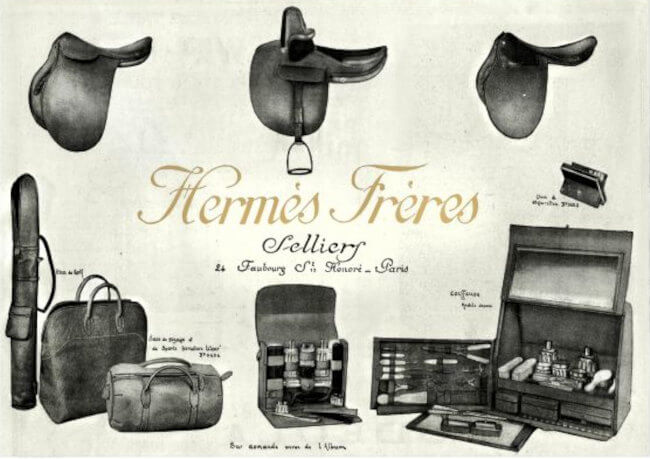 Hermès Frères original poster
Hermès Frères original poster
Adolphe and Émile-Maurice Hermès, the sons of Charles-Émile Hermès, assumed leadership, rebranding the company as Hermès Frères (Hermès Brothers). Émile-Maurice’s innovation was notable as he obtained exclusive rights for zippers in French leather goods and attire, introducing this modern fastening concept to the country.
In 1918, their mastery culminated in the creation of the first leather golf jacket with a zipper, an achievement that earned them the moniker “fermeture Hermès” or “Hermès closing” in honor of their groundbreaking invention. The 1920s saw Émile-Maurice’s vision expanding the business with stylish accessories and clothing lines while mentoring his sons-in-law as future partners.
In 1922, a new chapter unfolded with the debut of Hermès leather handbags, inspired by Émile-Maurice’s wife and marking a transformative moment in fashion history. International horizons beckoned, and the brand’s presence in the United States materialized in 1924, coinciding with the introduction of the first women’s couture apparel collection in 1929.
The 1930s heralded the arrival of iconic Hermès products such as the Kelly bag, originally known as the Sac à dépêches, in 1935, and exquisite silk scarves in 1937. In this era, Hermès also ventured into the American market, subsequently withdrawing from Neiman Marcus in New York.
Furthermore, 1949 marked the brand’s first foray into perfumery with the launch of Eau d’Hermès, showcasing their commitment to diverse realms of luxury. Throughout this journey, Émile-Maurice Hermès upheld a philosophy rooted in “leather, sport, and a tradition of refined elegance,” defining the enduring legacy of the renowned maison.
The Robert Dumas era
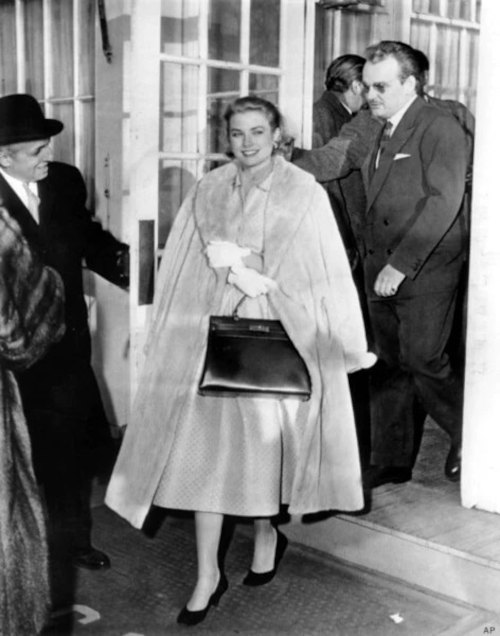 Grace Kelly covering her belly with a Sac à dépêches bag
Grace Kelly covering her belly with a Sac à dépêches bag
In 1951, Robert Dumas-Hermès assumed the leadership of the company, marking the first time a non-blood relative of the Hermès family held this position. To symbolize this new era, he merged the Hermès name with his own, adopting the moniker Dumas-Hermès. Under his visionary leadership, the early 1950s witnessed the introduction of the iconic Hermès logo featuring a Duc carriage and horse, a symbol that would become synonymous with the brand, along with their signature orange packaging.
Robert Dumas-Hermès placed a strong emphasis on innovation and diversification, expanding the brand’s offerings into handbags, jewelry, and accessories, with a particular focus on the exquisite silk scarves. The Faubourg Saint-Honoré Hermès store became a renowned gathering place for international celebrities during this time.
In 1956, the bag known as Sac à dépêches gained worldwide fame as Grace Kelly used it to conceal her pregnancy, leading to its rechristening as the Kelly bag, a name officially embraced by Hermès in 1977.
Furthermore, in 1959, designer Catherine Chaillet created the Constance handbag, naming it after her fifth daughter, and it gained global prominence through Jacqueline Kennedy’s appearances as the First Lady of the United States.
In 1961, Hermès ventured into the perfume industry with the launch of Calèche, a scent inspired by the traditional horse carriage, which also happens to be the company’s iconic logo, continuing its legacy of elegance and sophistication.
The fall and rise
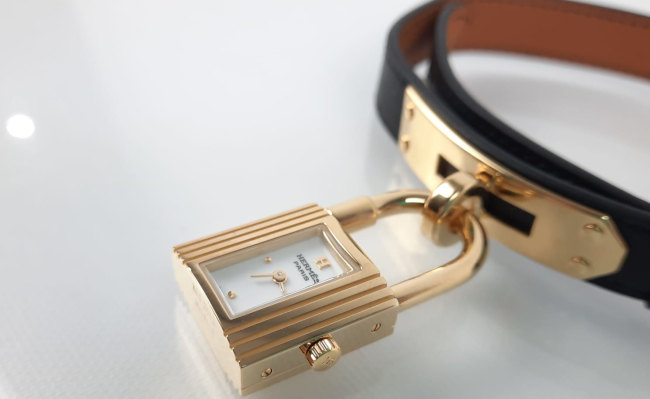
In the 1970s, Hermès faced a challenging period as the brand’s commitment to natural materials stood in contrast to industry trends favoring synthetics, leading to a decline in its market position. However, a subsequent shift in consumer preferences back toward natural materials breathed new life into Hermès’s fragrances, reigniting interest in the company’s offerings.
In 1978, Jean-Louis Dumas, the son of Robert Dumas-Hermès, assumed leadership and embarked on a restructuring of the brand. This strategic pivot refocused Hermès on its core strengths, including silk, leather goods, and ready-to-wear fashion, effectively reversing the brand’s fortunes.
Under Dumas’s stewardship, Hermès underwent a creative transformation with the addition of designers Eric Bergère and Bernard Sanz. Their contributions brought forth unique and coveted items such as python motorcycle jackets and ostrich-skin jeans.
In 1979, an innovative advertising campaign sought to broaden Hermès’ appeal, targeting a younger demographic and reshaping the brand’s image. Concurrently, in the 1970s, Hermès ventured into the world of watchmaking with the establishment of La Montre Hermès, its subsidiary in Switzerland.
Throughout the 1980s, Jean-Louis Dumas expanded the company’s portfolio by increasing its holdings in suppliers and acquiring esteemed tableware manufacturers, including Puiforcat, St. Louis, and Périgord, further solidifying Hermès’s presence in the world of luxury and refinement.
The iconic years
 Jane Birkin with her wicker basket
Jane Birkin with her wicker basket
In a moment of iconic creation, Jean-Louis Dumas introduced the legendary Birkin bag in 1984, inspired by actress Jane Birkin. This exquisite handbag swiftly attained global recognition, solidifying its status as the most renowned and valuable handbag in the world. By 1990, Hermès had curated an impressive collection of over 30,000 pieces, showcasing its commitment to craftsmanship and luxury.
In a strategic move, Hermès relocated its workshops and design studios to Pantin, near Paris, and made its debut on the Paris Bourse (stock exchange) in June 1993, generating considerable interest and attention. This equity sale aimed to alleviate family tensions by allowing certain members to sell their holdings, while the Hermès family retained approximately 80% of the stocks, with Jean-Louis Dumas and the entire family making appearances on Forbes’ list of billionaires.
Dumas implemented changes in the distribution strategy, reducing Hermès franchises from 250 to 200 and increasing the number of company-owned stores from 60 to 100, enhancing control over sales. The brand’s global expansion included a focus on China, with the opening of a company-operated boutique at The Peninsula Beijing in 1997.
Additionally, Jean-Louis Dumas enlisted the creative expertise of Martin Margiela to oversee women’s ready-to-wear in 1997. Amidst these developments, Hermès continued its acquisition of franchised stores, diminishing their number, and embarked on unexpected artistic ventures in the late 1990s, reaffirming its reputation for innovation and excellence.
The present days
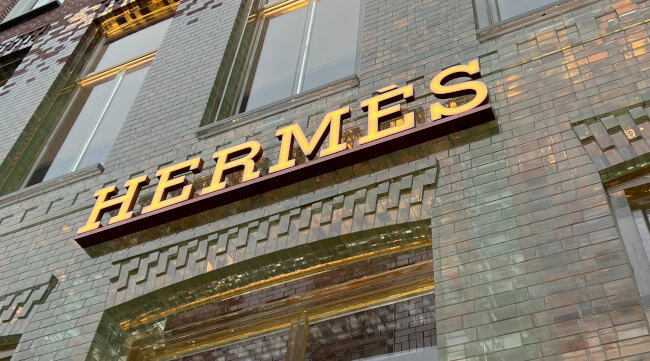
In the early 2000s, Hermès witnessed significant transitions and achievements. In 2003, the departure of Martin Margiela marked a changing of the guard, with Jean Paul Gaultier assuming the role of head designer. The following year, Jean-Claude Ellena took on the position of in-house perfumer, crafting highly successful fragrances like the Hermessence line.
After an impressive 28-year tenure, Jean-Louis Dumas retired in January 2006, and for the first time in the company’s history, a non-Hermès family member, Patrick Thomas, took the helm as CEO.
Hermès’s financial success remained evident, with a 9.7% increase in turnover reported in February 2015, surpassing €4 billion in sales, reflecting growth across various regions. Subsequent milestones included the opening of its largest store at the Dubai Mall in March 2018 and the brand’s ranking as the 33rd “World’s Most Valuable Brand” by Forbes in 2019.
Hermès further solidified its position globally, ranking 7th for industrial design registrations in the 2021 review of WIPO’s World Intellectual Property Indicators. Notably, in 2023, Hermès successfully won a copyright lawsuit against artist Mason Rothschild for replicating and selling the iconic Birkin bag as an NFT collection.
The company continued to thrive, reporting a remarkable 22% increase in sales totaling €3.4 billion during the first quarter of 2023. In line with its commitment to excellence, Hermès unveiled plans for the establishment of four new production facilities in France, located in Espagnac, Loupes, Riom, and Charleville-Mézières, further cementing its legacy in luxury craftsmanship.
How many Hermès stores are there?
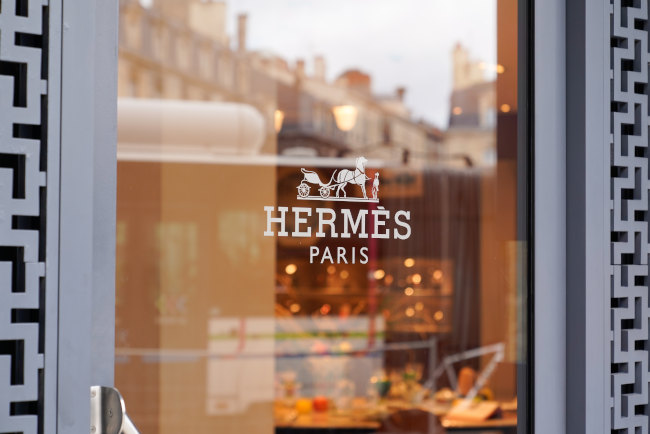
Hermès, renowned for its global luxury presence, strategically positions its twenty-five subsidiaries across Europe, the Middle East, the Americas, Asia, and Oceania. These subsidiaries oversee a network of 315 exclusive boutiques and 21 retail outlets worldwide, offering a meticulously curated selection of products crafted by Hermès’ four production units: Hermès Sellier, Hermès Parfums, La Montre Hermès, and La Table Hermès.
This extensive network ensures that a diverse clientele can access the full spectrum of Hermès offerings, including watches, fragrances, and tableware, through specialized stores, airport duty-free shops, and even inflight offerings, allowing the brand’s elegance and craftsmanship to touch enthusiasts worldwide.
Interestingly, when it comes to Hermès stores in Paris, the birthplace of this prestigious luxury brand, there are just three official Hermès boutiques. These include the Georges V boutique, the Rue du Sevres boutique, and the primary Hermès Flagship boutique situated in the lively heart of the city, near the iconic Jardin des Tuileries. These three boutiques represent Hermès’ presence in the enchanting City of Lights.
How are Hermès products crafted?
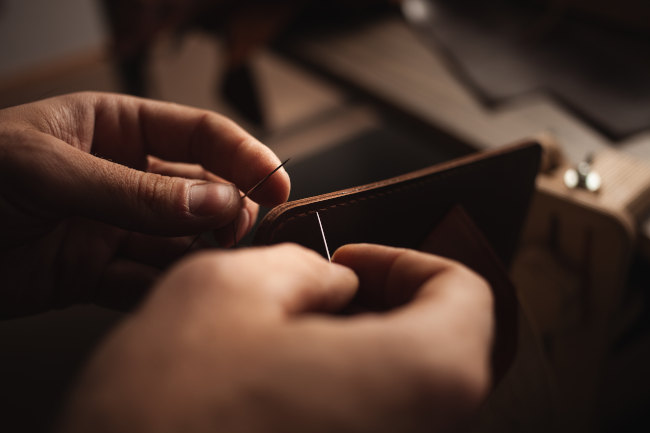
The craftsmanship of Hermès is undoubtedly the biggest asset of the brand, and throughout the 186 years of the French atelier history, it has stayed true to its origins, appreciating the traditional techniques that gave way to success and recognition.
The creation of Hermès products entails many specialized processes that can only be done by professionals; from the bright mind of a designer, to the skilled hands of an artisan, each step ensures a flawless finish to each piece that they make.
For this purpose, Hermès makes sure that every craftsman that works in its atelier is completely capacitated and able to craft such delicate and luxurious products. This is why each artist that works with the brand needs to train at least 6 years to master the legendary techniques to hand-stitch high-quality leather, process the materials and embed the hardware. All of Hermès artisans are very skilled people that learn how to create each piece depending on their speciality; whether it is leatherwork, silk weaving, watchmaking, jewelry crafting, footwear making, garment confection, etc.
The artisans that work in the craftsmanship of Hermès handbags are under incredible pressure, as their hands need to work masterfully to bring the exclusive handbags to life, using very specific techniques and working carefully in each piece. To craft a Hermès Birkin or Kelly handbag, 18 to 20 hours need to be spent to produce a perfect accessory.
But there is also a very important rule in the Hermès workshop, each handbag or piece needs to be done entirely by just one artisan, which means that each item is intricately made by a single person, giving a much more personal approach, as the artisan pours their heart into the making of the product. As Axel Dumas says: ‘The rule of one bag, one artisan is part of our DNA’.
This is mainly the key to Hermès success, alongside the traditional techniques that they keep applying to the manufacture of the products. As it is the personalized creation and the dedication of each artisan what makes this brand so special and acclaimed, and thanks to this approach, the products are truly flawless pieces of art.
Which Hermès bag is the most popular?
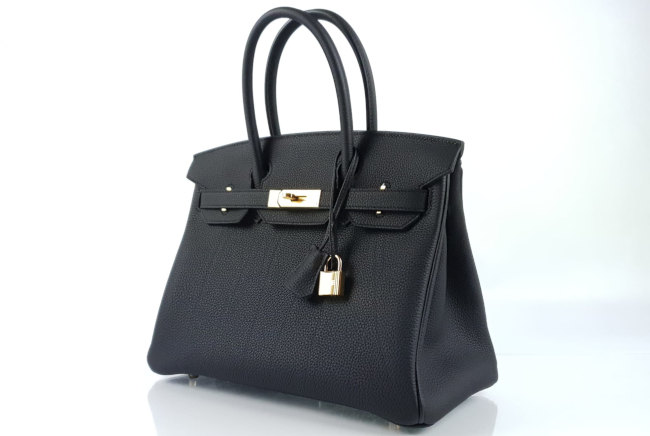
Hermès handbags are undisputed favorites of the French fashion house, with their iconic designs and intriguing stories, often commanding astonishing values. Among the numerous Hermès handbags, three shine brighter than the rest, and within this trio, one stands as the most sought-after and popular.
The Hermès Birkin handbag swiftly ascended to stardom upon its introduction in 1984. Inspired by actress Jane Birkin, this capacious accessory was designed for practicality and comfort, catering to women’s needs for ample storage. Its value has consistently appreciated over time, partly due to Hermès’ strategy of creating more demand than supply. The Birkin bag’s status and impeccable craftsmanship also contribute to its enduring allure.
Over the years, the Birkin has proven itself as an investment piece, capable of retaining its value, attracting celebrities, socialites, and savvy investors seeking both style and a guaranteed future profit in one classic luxury handbag.
Additionally, the timeless Kelly handbag, initially recognized as the “sac à dépêches,” gained widespread popularity after Princess Grace Kelly used it to shield her pregnant belly from paparazzi in 1956. The bag was subsequently renamed in her honor in the 1970s and has remained a cherished classic, renowned for its ability to appreciate in value and retain its desirability.
Completing the Hermès handbag trilogy is the compact Constance handbag, introduced in 1959 by Catherine Chaillet. This modern creation catered to the needs of contemporary women, offering a hands-free crossbody design. The Constance, like its siblings, retains its value remarkably well and can yield substantial profits in the luxury resale market, making it a prized choice for those seeking both style and investment potential within the Hermès collection.
Why are Hermès bags so expensive?
The Hermès brand is amongst the top high-luxury fashion houses in the world, and although its products are the most desired of the market, we can’t help but ask why are Hermès bags so expensive? The answer has much to do with many factors that we will explain in detail next.
Quality materials and craftsmanship
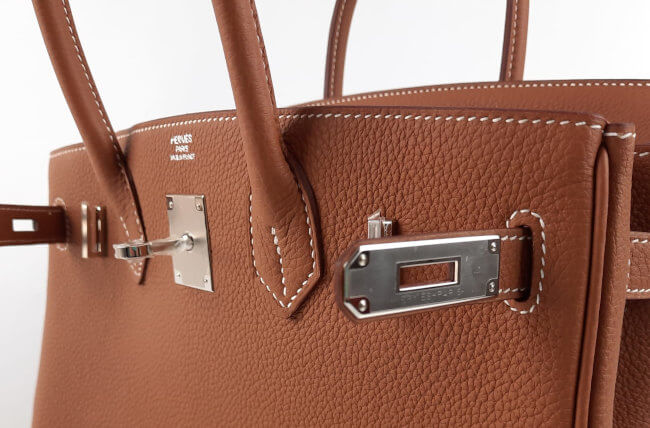
As we have testified, the craftsmanship of all Hermès products is truly a masterful work carried out by artisans. The great value of the techniques they apply, and the hours they spend to be able to make the Hermès handbags, adds much to the value on its own. However, the materials are also important and they should be taken into consideration.
Hermès employs only the finest materials for the creation of its handbags, these are always high-quality calfskin with skins such as Togo, Epsom and Swift, as well as other exotic skins that are much more valuable, like Niloticus and Porosus Crocodile, Alligator Mississippiensis, lizard and even ostrich. These skins are mainly used by top tier luxury houses, but Hermès makes sure to source these materials from extremely reputable places that guarantees their quality.
The precious metals that go into the creation of the hardware for the handbags are also incredibly valuable. The brand applies a thick gold or palladium plating to all the hardware present on the bag, no matter how small or big the piece is. There are also exotic handbags with crocodile skin that feature a bright and luxurious white gold hardware with inlaid diamonds. Hermès materials are undoubtedly very special, and this contributes to the high prices of the handbags.
Heritage and status
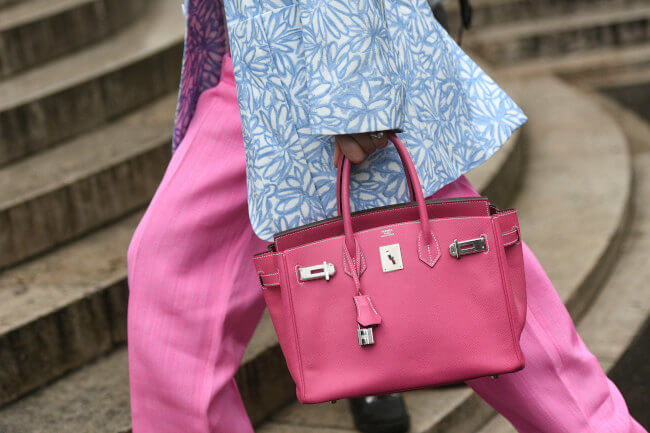
A big part of the high value of Hermès handbags lies in the great recognition and fame of the brand as a fashion house. The rich Hermès’ history is prestigious enough to add an amazing value to the products. Besides, each of the exclusive handbags, such as the Birkin, Kelly and Constance, have incredible origin stories related to celebrities and even royalty, which adds up even more fame to these products.
Throughout the years, these three emblematic handbags gained recognition and became true icons of fashion, which makes them exclusive and desirable accessories for every fashionista. Owning a Hermès handbag is not an easy task, as not anyone can buy them directly at the store, this is why they have quickly become an object of worship amongst the high society elites.
Everyone that owns a Hermès bag is considered someone with an amazing taste for elegance and the fine things in life, as well as someone wealthy, with the right contacts and with high prospects in life, someone that can get what they want when they decide it. This is why these exclusive accessories are preferred by those with a high status in society.
Hermès’ business strategy
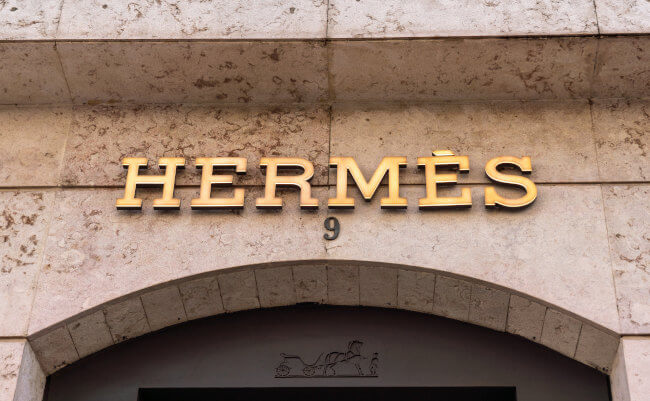
The main reason for the high price of Hermès handbags is the way that the brand conducts its business strategy, that has been carefully selected to attain exactly what they need. It is common knowledge that not anyone can go to a Hermès store and buy a handbag so easily, especially any of the three iconic bags.
But this is mainly due to the strategy that implies a really high demand with very little supply to cover it. The brand is constantly producing the handbags, but they don’t put them to sale that regularly, since they only send a little quantity of them to the official stores worldwide. This is why not everyone can buy them easily, which contributes to higher desire for the bags, but less to be bought at official places.
With time, this difficulty to buy the acclaimed handbags makes them coveted and sought-after products, skyrocketing their values in the second-hand luxury market, where people sell their used bags for a higher profit. Eventually, this high resale value also makes them more valuable on their retail price, so the brand increases it to obtain more.
Aside from this, we must point out that as any high-luxury fashion house, Hermès uses the exclusivity factor to create not only more demand, but also to assign a special value to its products. Luxury items have two values: the original one, which is the one that corresponds to the costs to manufacture the product and its materials, and the perceived value, which references the value that the product can obtain thanks to the prestige of the fashion house that accompanies its name.
When it comes to Hermès, the fact that the Birkin, Kelly and Constance handbags are accompanied by the French house’s name, makes them even more valuable and sought-after products, contributing to the increase of its retail and resale values.
Why invest in Hermès bags?
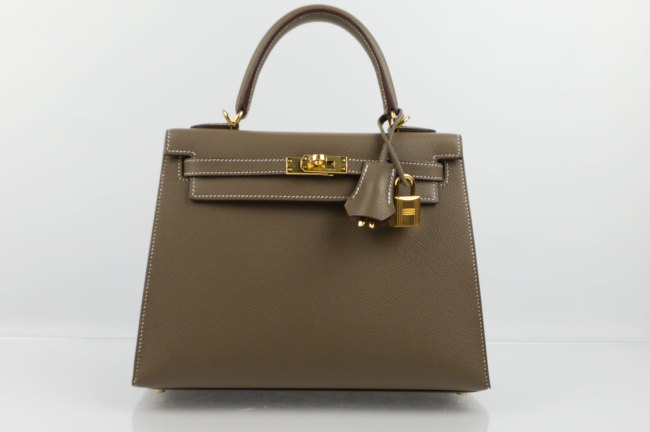
As the prices for the Hermès handbag rise in the secondary luxury market, there is a very high possibility for Birkin, Kelly and Constance handbags to retain their value and even appreciate over time. If you’re wondering if it is a wise decision to invest in a Hermès handbag, we want to assure you that it definitely is, and here we explain why.
Since the introduction of the Birkin handbag in 1984, this luxury accessory has been able to revalue up to a 500% rate, which means that this exclusive item not only retains its original value, but it can double it or even triple it, providing a high percentage of return in investment, with 200% to 300% and even more for highly exclusive Birkin models, such as the Himalaya Birkin bag.
However, this is not something that only the Birkin bag can achieve, as the Kelly and Constance bags have also proven to be this exclusive, and although their revaluation is not as high as the one shown by the Birkin bag, they can still give a very high percentage of return in investment, even higher than exclusive bags from brands like Chanel or Louis Vuitton.
So if you’re planning on buying any of the three coveted Hermès handbags, you can be certain that they are investment pieces, that you can easily take care of their materials and sell them in a few years to obtain a very high profit, even more than what you initially paid for them.
If you’re a professional Hermès reseller or you want to sell your Hermès handbags in the luxury resale market, follow this link.
Why can’t I buy a Hermès bag?
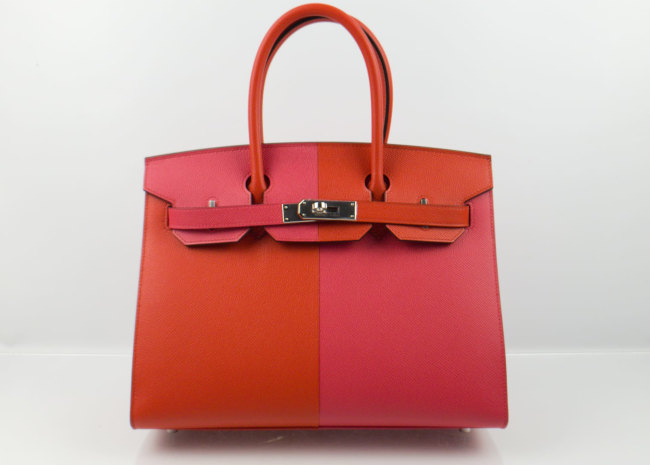
If you’re a Hermès lover you have surely tried to get your hands on any of its three iconic handbags, but you have probably experienced disappointment when you found out that you needed to write your name on a waiting list. Well, you’re not alone, as the great majority of Hermès clients must wait up to 5 years to buy any of these luxurious items.
As we mentioned above, the only reason for which you’re not able to buy a Hermès handbag, is because of Hermès’ business strategy, designed to create a very high demand with little to no supply to cover it. This means that they use the prestige of their brand to create an image of exclusivity for these handbags, meaning that not anyone can have them, they are reserved only for the most wealthy and high-status individuals, they are often clients that spend thousands of euros on less exclusive products, to then be considered to purchase a bag.
But why does this happen? Why can’t anyone buy a Hermès bag? Simply because it is not convenient for the brand to make their bags available to anyone. All fashion houses have a very intricate exclusivity system that they most exploit correctly to obtain what they need from it, and Hermès, as one of the most famous fashion houses of the world, uses this resource to get more recognition and profit.
This means that if they allow their bags to be bought by anyone, at any time, the exclusivity of said products and the important aura surrounding the brand would completely be destroyed. This is why you can’t just walk into an official store and buy a Hermès handbag.
How to know if a Hermès bag is authentic?
Authenticity is the key aspect that everyone must have in mind when purchasing a luxury product. Nowadays, the luxury market is full of counterfeiters that work really hard to match the exclusive item’s appearances, creating exact replicas of the products, and even sourcing the skins from the same supplier that works with the famous brands.
All of this has led investors and buyers to be suspicious of transactions made in marketplaces other than the official luxury stores, because almost any item can be a fake. The risks of purchasing a counterfeited product are very high, and they bring bigger consequences than just owning a fake product.
Authenticity is crucial to every luxury item because it is the only thing that guarantees that the product is valuable, and therefore, it is the only way that the item can revalue with time. And when it comes to Hermès handbags, these products are amongst que most counterfeited of all time, thanks to their incredible demand they are easy targets for professional counterfeiters.
This is why, if you purchase a Hermès handbag from a different source that is not the official store, you must be alert to the following elements to make sure that you’re obtaining a genuine product:
Craftsmanship and materials
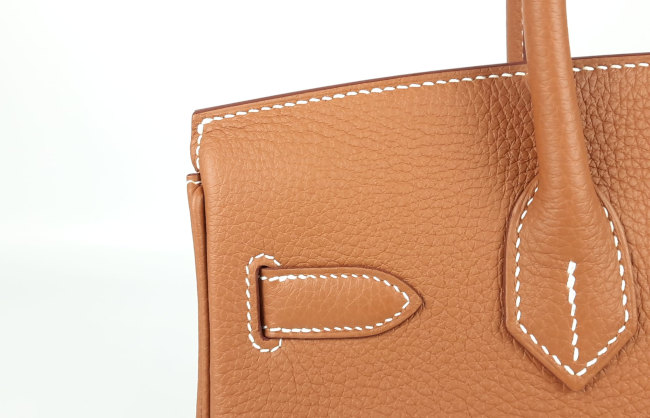
An original Hermès bag must be expertly made, with a completely impeccable construction, stitching and consistency. The stitches should always look symmetrical and be in a diagonal direction, as they are hand-made with a traditional method. The materials should also be of the highest quality, with natural grain, aroma and texture, they should never appear to be plastic.
The handbag’s silhouette must be perfect, it can never seem uneven or tilted. The size of the bag should be as described when purchased. To prove that it is the case, use a measuring tape to make sure that the base of the bag has the same centimeters as the size it represents.
The hardware must be shiny and not be easily peeled, it also shouldn’t show any signs of dents and deterioration (unless you’re purchasing a pre-loved handbag that has been used). You should always examine the weight of the handbags, they are usually a little bit heavy, even when empty, because they are made with natural materials. Take into consideration that every piece of hardware throughout the bag must be of the same color, which means the brass is all plated in the same precious metals.
Date stamps, printings and metal engravings
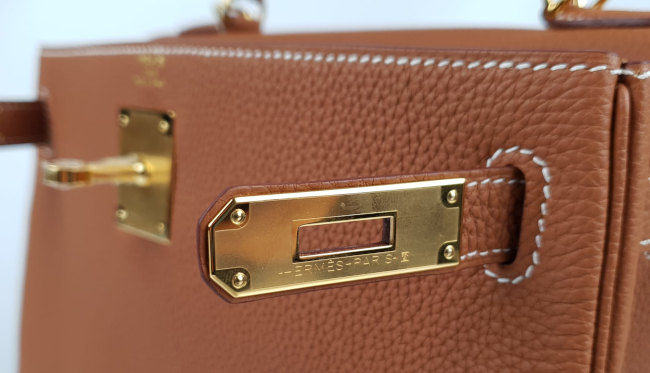
All Hermès handbags are branded with distinctive marks that guarantee their authenticity, symbols that the atelier adds to distinguish its creations from too detailed counterfeits. Every Hermès handbag, whether it is a Birkin, Kelly or Constance, must come with an interior heat-stamp or date stamp that denotes the year of creation of the bag with a letter code, and some other numbers and letters that indicate the workshop in which the handbag was made. The heat-stamp is made with great care and precision, it should be easy to read.
Aside from this, you should also find a print that reads: “Hermès – Paris – Made in France” printed under the closing flap of the three bags, just a few millimeters under the top stitches. The color of the printing should always match the hardware color. The font of the print must be consistent and symmetrical, not too big and not too small.
The metal engravings are also important elements, they are present on the closing clasp of the Constance bag, and the closing plaques of the Birkin and Kelly handbags. These engravings usually read: “Hermès – Paris”, and when the hardware of the bag is plated in gold, they show a little square symbol beside the words, it indicates that the gold is authentic. Bags with palladium plated hardware don’t show this symbol.
To know more details about Hermès authenticity date stamps and special symbol prints.
Packaging
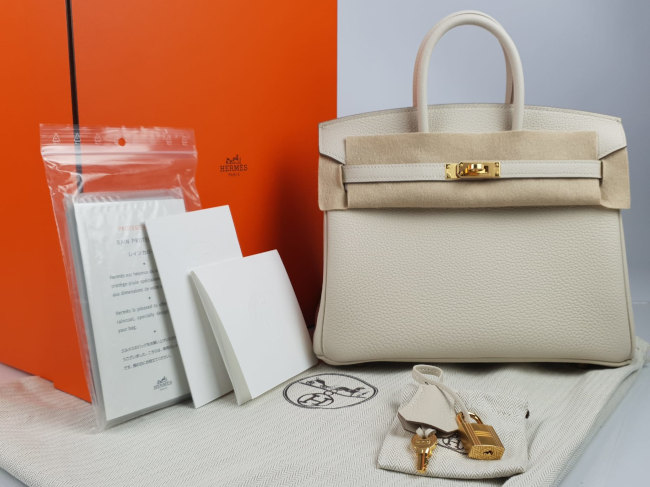
When buying a Hermès handbag, you should always demand the original packaging, because there is a big risk that the bag may be stolen from an official store, from someone that carried it, or from someone’s personal collection. The signature Hermès box is a must when getting a Hermès bag, so make sure to always have it when buying one of these exclusive accessories.
The packaging of a genuine bag must be correct. The handbag should fit comfortably inside the box, without being too tight or leaving too much space. It should also come with one dust bag that is big enough for the bag, but not too excessively big. In the case of the Birkin and Kelly bags, there is also an additional small dust bag used to store the clochette that contains the keys and padlock to lock the bag.
Additionally, Kelly handbags have a strap that can be detached, so they also come with a medium extra dust bag to store the strap. All Hermès dust bags are made of a wide and soft material in beige color, with a light brown drawstring, and they must have a printed Hermès logo that has a double circle around the horse’s carriage.
On the other hand, the iconic orange box must have a small Hermès logo on the lid, and when illuminated with a UV light, it should show small logos all over the lid that are printed in invisible ink, this measure was recently implemented by Hermès to give an extra authentication to its boxes. This feature may not be present in older or vintage handbag’s boxes.
Aside from the main packaging, the Hermès handbags come with a little book that specifies the leather in which the bag is made. Some Birkin or Kelly handbags may also come with a plastic rain cover to protect the bag from the rain, this rain cover is only present in specific sizes, so not every bag comes with it.
Official documents
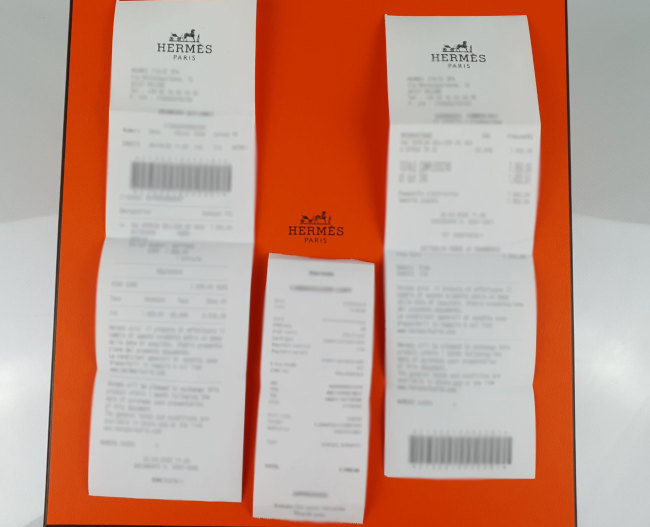
The most reliable way to know if a Hermès handbag is authentic is by consulting three crucial documents: the official store invoice, the payment ticket and the bank movement. These three documents are able to completely authenticate a bag that has already been inspected physically to make sure that it follows the right characteristics.
When buying a Hermès handbag in an online marketplace or a non official source, always make sure to demand at least the official invoice and the payment ticket, as they contain important data that can help you corroborate that that specific bag was purchased in an official store at some point in time.
The official invoice contains the specific date stamp that is unique to each handbag ever produced, so it can be easily compared to the heat-stamp inside the bag. The invoice also details the exact skin, color, hardware, model and size of the bag, so all of these characteristics should match the ones inspected on the handbag. On the other hand, the payment ticket works as a way to make sure that that exact bag was indeed purchased at a certain date and time for a specific amount, these details should match to those in the official invoice.
If you want to go even further, you can ask for the bank movement of the transaction, that shows the approved purchase made at the same date and time and for the same amount that can be seen on the payment ticket and official invoice. Only then can you assure that the bag is 100% authentic.
At The Birkin’s & Kelly’s House we always make sure to provide every element of authenticity with your purchase, handing you a bag that was legally bought in an official Hermès store, with all the documentation to prove it, so you can rest assured that you own a genuine exclusive accessory.
Additionally, there are authenticity levels for Hermès handbags, and at The Birkin’s & Kelly’s House we offer the highest authenticity standards.
If you want to consult specific guides on how to authenticate each Hermès handbag, follow these links:
How to take care of a Hermès bag?
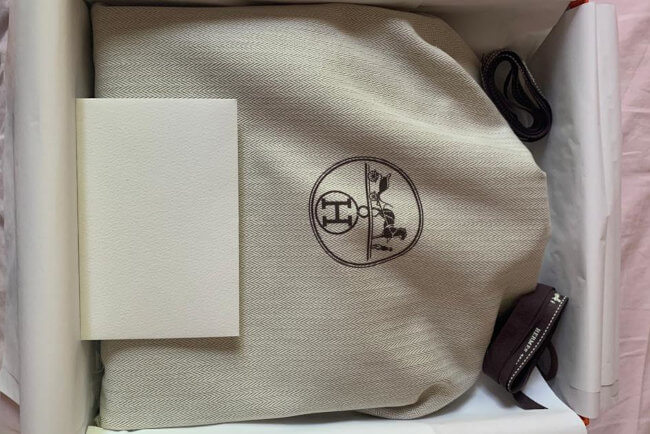
The condition of a Hermès handbag plays a very important role in determining if it will retain its value and increase it over time. When buying a Hermès bag you need to know that you must take care of its materials, not only to keep them valuable for the future, but also for your own enjoyment, to always wear a pristine accessory that will keep elevating your status each time.
Although Hermès handbags are built to last and made with incredible quality materials, there is always a risk for deterioration, because it is a natural process, especially when it comes to an accessory that is made of animal origin products, it will never be as low maintenance as plastic, but it is much more worth it and durable.
Here we show you some ways in which you can take care of a Hermès bag to keep its distinctive shine:
- When not in use, always keep your Hermès handbag inside its dust bag and box, this way it can be protected from any harm. Be sure to put it delicately inside the box, so the handles are not bent, avoiding deformation risks.
- The ideal place to store your luxury handbags is in a ventilated area, away from direct sunlight, with stable temperatures and an equilibrated level of humidity, especially not humid, as it can lead to mold growth on the surface of the leather.
- When storing your bags, take off the plastic seals that cover the hardware. Although you may think that they protect the metal, they actually adhere strongly and can cause tarnishing and humidity to grow under them, so it is better to rip them off when unboxing your bag for the first time.
- When wearing your Hermès bag, be careful not to bump it against rough surfaces, as they can be vulnerable to scratches, rips and dents.
- If you’re storing items inside your bag, be careful not to overfill it, as the material can be deformed or stretch too much. You should also mind the items you put inside, avoid any pens that can lose their ink, or any makeup or lotion that can spill, these products can damage the soft lambskin lining.
- Don’t leave the bags unattended near to children or pets, to avoid scratches, unwanted fluids on the skin or any type of spillage.
- If your handbag needs restoration or cleaning, always take it to the professional Hermès maintenance service, so it can be quickly repaired by expert artisans. Don’t take the bag to any other maintenance service that is not authorized by the brand.
Get a more detailed guide on how to care for your Hermès handbags properly.
It is clear that the Hermès brand will still maintain its position above the luxury panorama, rising even higher as the time goes by and earning more recognition for its incredible creations. Its trinity of bags will continue to perpetuate the legacy of the brand, and will always remain as the most desirable objects of the luxury market.
If you’re looking for an easy way to buy a brand new in box Hermès bag without waiting lists and from the comfort of your home, don’t hesitate to enter our reputable online store, where you will find exactly the bag that you’re looking for, and if you don’t, we can find it for you in every corner of the world.
At The Birkin’s & Kelly’s House we are committed to provide a VIP service for our clients, we draw you closer to your desired Hermès bag without trouble, waiting or disappointment. Besides, we offer the best prices of the luxury resale market.
Trust us as your luxury experts to get exactly what you need as fast as possible!